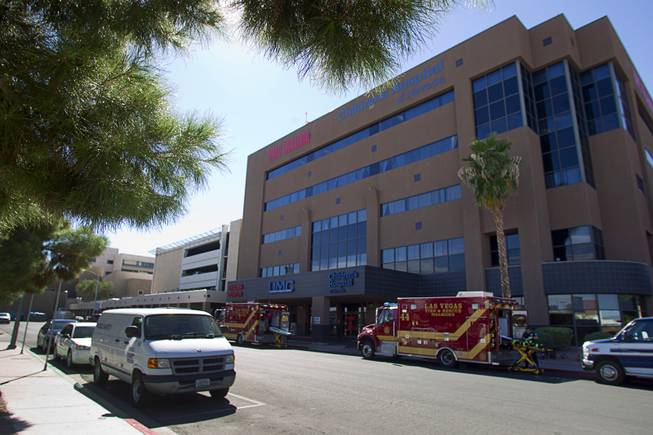
An exterior view of the Trauma Unit and Children’s Hospital of Nevada at University Medical Center Wednesday, Oct. 8, 2014.
Published Thursday, June 23, 2016 | 11:10 a.m.
Updated Thursday, June 23, 2016 | 2:55 p.m.
Related Content
No additional trauma centers will be added to the current system in Southern Nevada.
The Southern Nevada Health District's Board of Health voted 7-2 against expanding the existing trauma system, rejecting bids from three local hospitals — Centennial Hills Hospital, MountainView Hospital and Southern Hills Hospital — to add Level 3 trauma centers.
The board, however, voted to look into pursuing an independent, needs-based assessment of the system.
Board members Bob Beers and Douglas Dobyne voted against the motion, citing support for adding at least one additional Level 3 trauma center.
In the fall of 2015, the three hospitals applied to the health district for initial authorization to operate low-level trauma centers, known as Level 3 trauma centers. In February, the Regional Trauma Advisory Board recommended that the Health District’s Board of Health deny those applications.
MountainView and Southern Hills, both owned by the Hospital Corporation of America, cried foul, saying the advisory board was biased against them and had a vested interest in maintaining status quo in the valley’s trauma system. The advisory board's members include five doctors and nurses who work at UMC, which operates the region's only Level I trauma center as well as a Level 2 pediatric trauma center. Sunrise Hospital and Medical Center, an HCA property at Maryland Parkway and Desert Inn Road, is home to a Level 2 trauma center, and St. Rose Dominican Hospital-Siena Campus operates a Level 3 trauma center in the southwest valley.
Level I trauma centers handle the most serious cases, while Level 3 centers provide care for more minor injuries, like falls or car crashes in which victims are not critically injured.
HCA has argued that patient comfort and safety would be compromised by not expanding trauma options. The hospitals say growth in the valley, especially in the northwest and southwest, left too many people too far away from prompt trauma care.
Officials from HCA also have contended that decision-makers focused on protecting UMC as opposed to patient care. HCA also said the approval process was tainted by conflicts of interest among various elected leaders, government officials and medical directors .
But opponents of the expansion proposals countered that adding trauma centers would jeopardize UMC's ability to provide quality care and train doctors, which would damage the overall quality of care in he valley. They also contended HCA was motivated not by a desire to improve the welfare of local residents, but by the opportunity to boost their profits.
The health board, in rejecting the proposals, followed the recommendation not only of the Regional Trauma Advisory Board but also the Office of Emergency Medical Services and Trauma System, which oversees the local trauma system. The OEMSTS, a subset of the Southern Nevada Health District, determined that the existing trauma system was meeting regional needs, thereby not warranting any additional trauma centers.

Join the Discussion:
Check this out for a full explanation of our conversion to the LiveFyre commenting system and instructions on how to sign up for an account.
Full comments policy